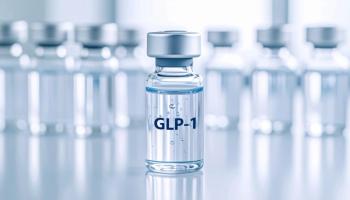Key Takeaways
- The American Heart Association (AHA) has introduced a new concept, cardiovascular-kidney-metabolic (CKM) syndrome, highlighting the interplay of cardiovascular disease with kidney disease, type 2 diabetes, and obesity, leading to a redefinition of risk, prevention, and management within the field of cardiology.
- This advisory emphasizes early identification of CKM syndrome, encouraging health care professionals to proactively screen for and address risk factors at each of the 5 CKM stages, integrating lifestyle changes, medication, and innovative treatments when necessary, with a focus on improving cardiovascular and kidney health.
- The AHA advocates for fundamental changes in health care education, care organization, and reimbursement strategies, fostering partnerships among stakeholders to enhance access to therapies, promote healthier lifestyles, and support ideal cardiovascular health in diverse communities.
The American Heart Association (AHA) recently published a new presidential advisory from a panel of experts to redefine cardiovascular risk, prevention, and management. The experts have analyzed and defined the overlap of cardiovascular disease (CVD) with kidney disease, type 2 diabetes (T2D), and obesity, according to the advisory, which was published in Circulation.1,2
This marks the first time that experts have identified these conditions as cardiovascular-kidney-metabolic (CKM) syndrome, an indication that those who have or are at risk for CVD may have CKM.1
“The advisory addresses the connections among these conditions with a particular focus on identifying [those] at early stages of CKM syndrome,” Chiadi E. Ndumele, MD, PhD, MHS, FAHA, an associate professor of medicine and director of obesity and cardiometabolic research in the division of cardiology at Johns Hopkins University in Baltimore, said in a statement. “Screening for kidney and metabolic disease will help us start protective therapies earlier to most effectively prevent heart disease and best manage existing heart disease.”1
According to the experts, CKM syndrome can range from stage 0, defined as no risk factors and preventive, to stage 4, the highest risk with established CVD and can include kidney failure. The stages also have their own specific screenings and therapies. Screening is used to detect cardiovascular, metabolic, and kidney health changes in early stages, identify social and structural barriers to care, and prevent progression to the next stage.1
The experts also describe CKM syndrome regression in the advisory, which is when individuals make healthy lifestyle changes and achieve weight loss to lower CKM syndrome states and a better overall health state. They advise that the best time for patients to experience regression is in stages 1, 2, and 3.1
The authors of the advisory defined the 5 stages as follows:1,2
- Stage 0, defined as no CKM risk factors. At this stage, individuals should be preventing CKM syndrome, including maintaining ideal health according to the Life’s Essential 8 recommendations from the AHA. This includes eating healthy eating, physical activity, sleep habits, avoiding nicotine, and maintaining optimal weight, blood pressure, blood sugar, and cholesterol, according to the statement. The suggested screening at this stage is every 3 to 5 years to assess blood pressure, triglycerides, high-density lipoprotein cholesterol, and blood sugar.
- Stage 1, defined as excess or dysfunctional adiposity. In this stage, healthy lifestyle changes should be adopted as well as having a goal weight loss of 5%. Treatment of glucose intolerance can be used, if needed. Screening should occur every 2 to 3 years to evaluate CKM risk factors.
- Stage 2, defined as metabolic risk factors and kidney disease. Individuals in this stage have T2D, high blood pressure, high triglycerides, or kidney disease, according to the authors. They said these factors indicate a higher risk for worsening kidney and/or heart disease. Physicians should address risk factors to prevent a CVD diagnosis and kidney failure. Treatment includes medication to control risk factors, as well as SGLT2 inhibitors to help protect kidney function and reduce risk of heart failure. Additionally, glucagon-like peptide 1 receptor agonists are suggested for those with T2D. Screening is suggested to align with AHA and American College of Cardiology guidelines, stating that yearly assessments of blood pressure, triglycerides, cholesterol, blood sugar, and kidney function should take place. For those with increased risk of kidney failure, there should be more frequent screenings of the kidney.
- Stage 3, defined as subclinical CVD in CKM syndrome stage 3 diagnosis should focus on preventing individuals who are at high risk to progress to symptomatic CVD and kidney failure, according to the authors. This could include increasing or changing medication and additional lifestyle changes. Measurements of coronary artery calcium are advised to assess the narrowing of arteries when treatment options are unclear, and the results could help indicate asymptomatic heart failure.
- Stage 4, defined as CVD in CKM syndrome with and without kidney failure. This stage includes 2 subcategories, including and excluding kidney failure. The authors detail that individuals in stage 4 may have already had a heart attack, stroke, or heart failure. Further, they may also have other cardiovascular conditions, including peripheral artery disease or atrial fibrillation. The focus of this stage includes individualized treatment for CVD with consideration for CKM syndrome.
For predicting risk factors, the authors suggested updating the current risk calculator, Pooled Cohort Equation, to include measurements of kidney function, T2D, and social determinants of health. Further, it should be used to evaluate individuals as young as age 30, with a 10- and 30-year estimate of CVD risk.1
“There is a need for fundamental changes in how we educate health care professionals and the public, how we organize care and how we reimburse care related to CKM syndrome,” Ndumele said in the statement. “Key partnerships among stakeholders are needed to improve access to therapies, to support new care models and to make it easier for [those] from diverse communities, and circumstances to live healthier lifestyles and to achieve ideal cardiovascular health.”1
The authors suggest changes to clinical workflows, care teams, insurance coverage, and reimbursement strategies that include support the successful implementation of CKM guidance.2
References
- Heart disease risk, prevention, and management redefined. News release. American Heart Association. October 9, 2023. Accessed October 9, 2023. https://newsroom.heart.org/news/heart-disease-risk-prevention-and-management-redefined?preview=95af
- Ndumele CE, Rangaswami J, Chow SL Neeland IJ, et al. Cardiovascular-kidney-metabolic health: a presidential advisory from the American Heart Association Circulation. 2023;10.1161/CIR.0000000000001184. doi:10.1161/CIR.0000000000001184


















































































































































































































